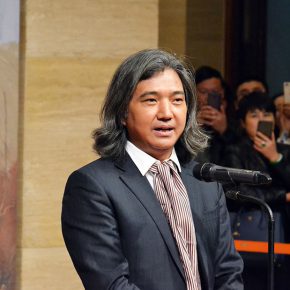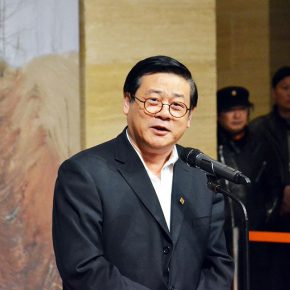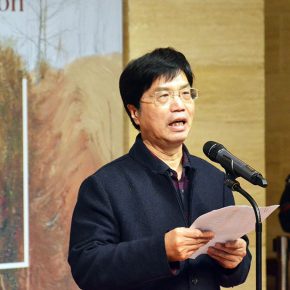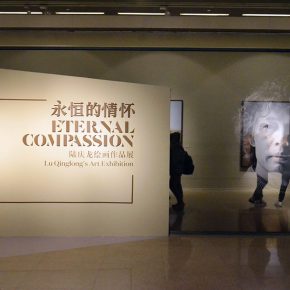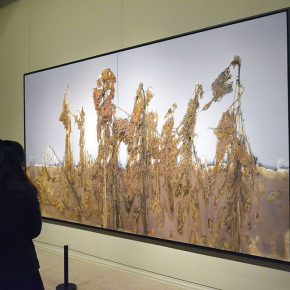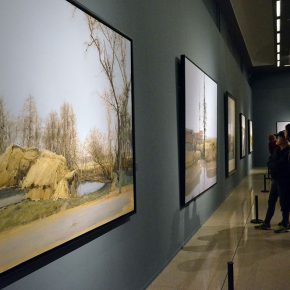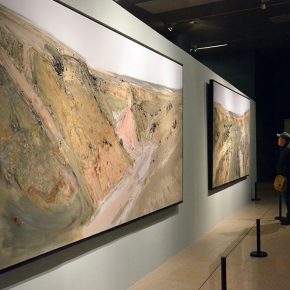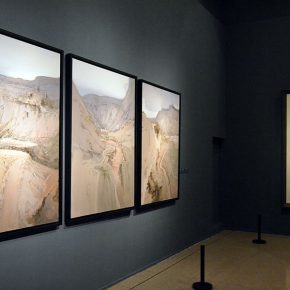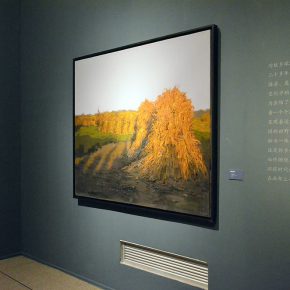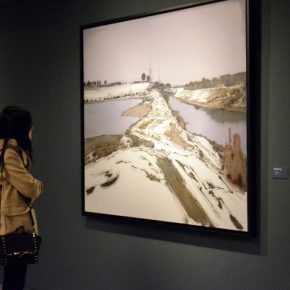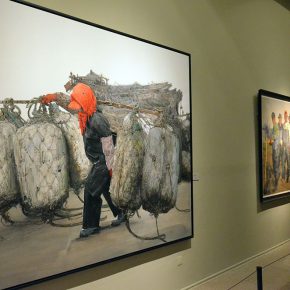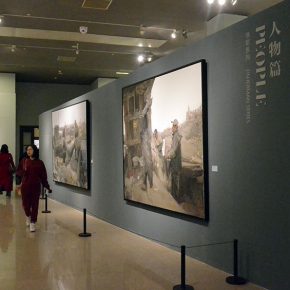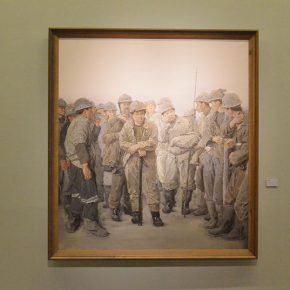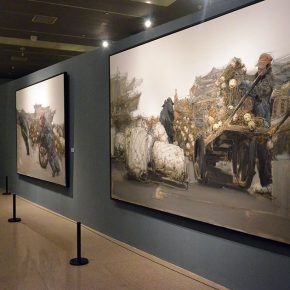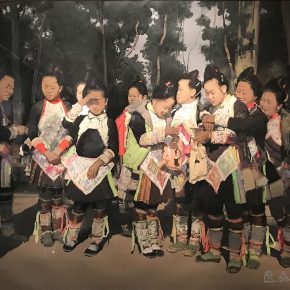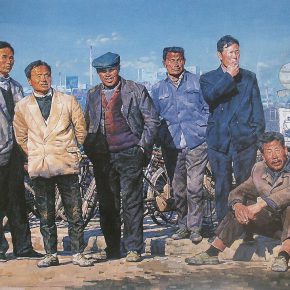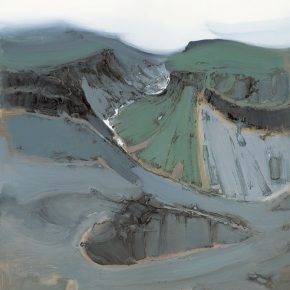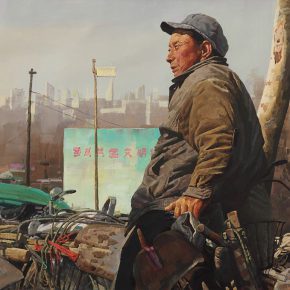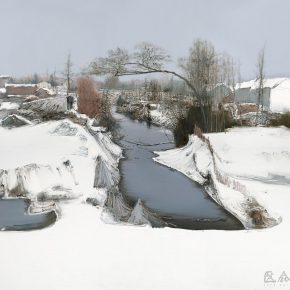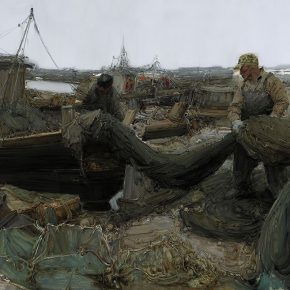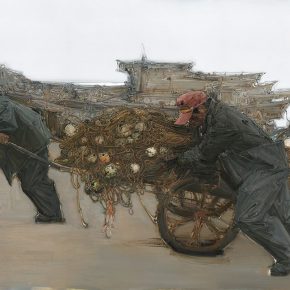
On November 4, 2017, hosted and planned by the National Art Museum of China, NAMOC Invitational Academic Exhibition Series and the China Arts Foundation Supported Projects “Eternal Compassion – Lu Qinglong’s Art Exhibition” kicked off at the National Art Museum of China. Wu Weishan, Director of the National Art Museum of China, Xu Li, Party Secretary of the China Artists Association, Vice Chairman and Secretary General, Zhang Jianhua, Chairman of Jiangsu Federation of Literary & Art Circles and Party Secretary, and the artist Lu Qinglong attended the opening ceremony and delivered a speech.
Lu Qinglong was born in Sheyang, Jiangsu, in 1964, and graduated from Nanjing Normal University in 1987. He is now a member of the Watercolor Art Committee of the China Artists Association, Vice Chairman of Jiangsu Artists Association, Director of Jiangsu Watercolor & Gouache Painting Art Committee, Vice President of Jiangsu Academy of Chinese Painting and Calligraphy, Master Tutor and Associate Researcher of the Institute of Fine Arts at the Nanjing University, the young and middle-aged worker of literature and art, with a good reputation in behavior and skills of the Jiangsu Province, the winner of the first “Yandu Culture Medal”. His creations have won many important awards in major national art exhibitions, in particular gaining great achievements in the field of gouache creation and a gold award in the national art exhibition. The creation of “Migrant Workers” series has profoundly reflected the creative thinking of the times that is “embed the life, rooted in the people”.
In recent years, Lu Qinglong has paid more attention to the creation of oil paintings. In addition to continuing to promote the creation themed on migrant workers, Lu Qinglong went to the rural areas of northern Jiangsu and the Loess Plateau in Longxi to sketch, as well as collecting folk customs and creating in the Qinghai-Tibet Plateau, he completed a large number of new creations which are extremely expressive, showcasing the tireless desire in the ontology of the painting language. He recently finished the “Fishing Song Series”, showing the heart in the performance of painting, which is a new practice in the concept of freehand painting.
This exhibition is displayed at Halls 13-17 on the 3rd floor of the National Art Museum of China, featuring a total of 76 representative works of oil painting and gouache painting created by Lu Qinglong in different periods over the past decade, covering the “Migrant Workers” series mentioned above and the “Minorities” series of people, as well as “Fishing Song” series, while the part of the landscape includes “The Village of Northern Jiangsu”, “Snow”, “Loess Plateau”, “Highland”, and “Landscape of Guilin”. Among them, four important gouache paintings by Lu Qinglong in the collections of the National Art Museum of China, including “Urban Random Thoughts” (won the bronze award of Watercolor & Gouache in the 10th National Art Exhibition in 2004), “Waiting” (2004), “Brothers” (won the gold award of Watercolor & Gouache in the 11thNational Art Exhibition in 2009), “Sisters from Basha” (2015). At the same time, Lu Qinglong also donated nearly 10 pieces of the new creation to the National Art Museum of China, in order to enrich the complete collection of his series of works by the National Art Museum of China.
Lu Qinglong’s paintings of people, include both migrant workers and minorities, who are simple & honest, kind, industrious and straightforward, “they can hardly open their eyes under the blazing sunshine, with their eyes reflecting the dark blue sky and their thick and chapped lips slightly apart to take in the aroma of soil; their calloused hands firmly hold the tools, silently watching the sun setting down… In addition, part of the landscape was created by his passionate love of hometown. Lu Qinglong was born in northern Jiangsu, a relatively backward area in economic terms, living on the arid land, the peasants in his hometown are simple, tough and industrious, though urbanization has brought tremendous changes to the hometown and rural peasants in his hometown – many peasants have left their hometown and entered cities, and the villages have gradually become quiet and depressed. The objects of the change were once spectators, and they have always been the focus delineated by Lu Qinglong, unknowingly becoming recorders and participants of changes of the times in the process of the urbanization of China. Novalis, a German romantic poet, once said that the essence of philosophical activity was spiritual restoration. Lu Qinglong’s creation is a journey to find a spiritual home – a truly spiritual “homecoming”.
Wu Weishan, Director of the National Art Museum of China, wrote in the preface: “Lu Qinglong does not constrain his art to a certain subject, a certain school, or a doctrine, or paint for an empty theory. But he paints what has touched him and stimulated gratitude in him, a colorful world with sunshine; he portrays the people with strength of character, with moral integrity and kindness and he depicts the solid land, the vast plains in northern Jiangsu.” Always with the common people in mind, he paints the world in his own way, and this is the Barbizon on his mind, the ideal land of happiness.
It remains on view till November 12.
Text by Lin Jiabin, translated by Chen Peihua and edited by Sue/CAFA ART INFO
(The artworks courtesy of the National Art Museum of China)??


